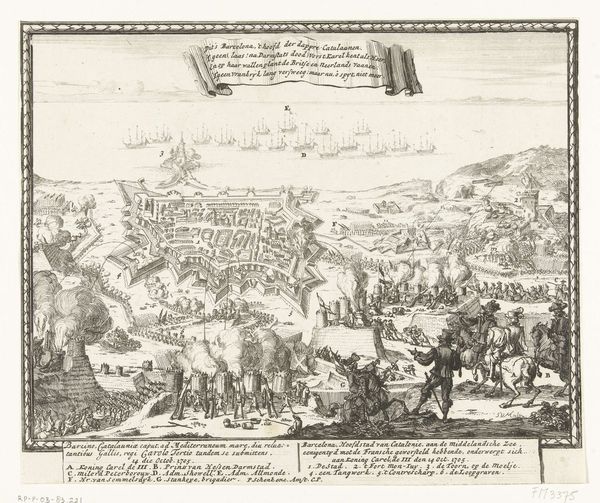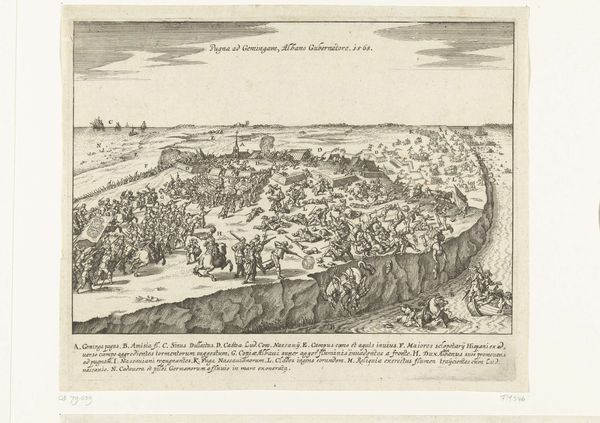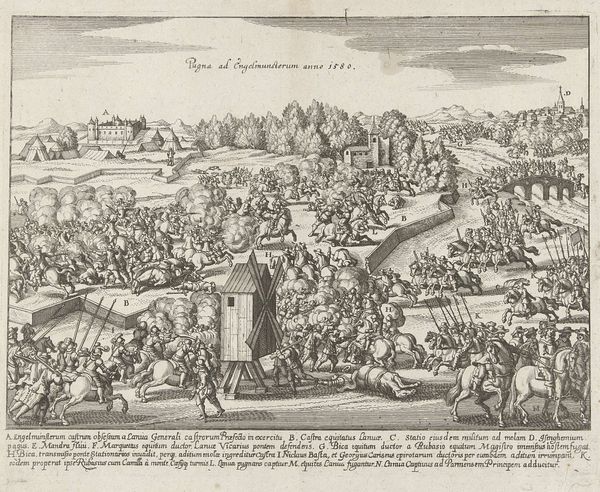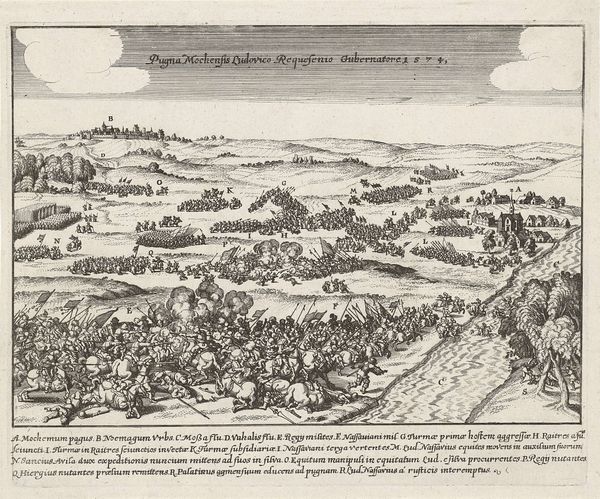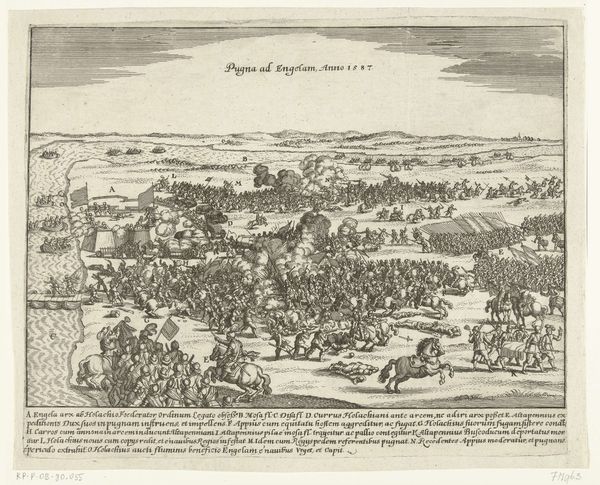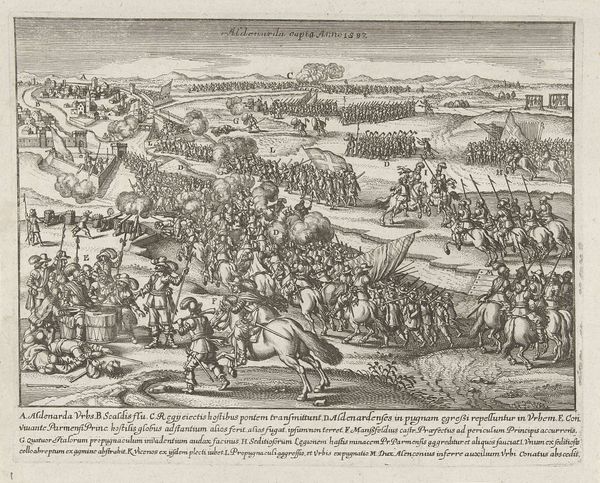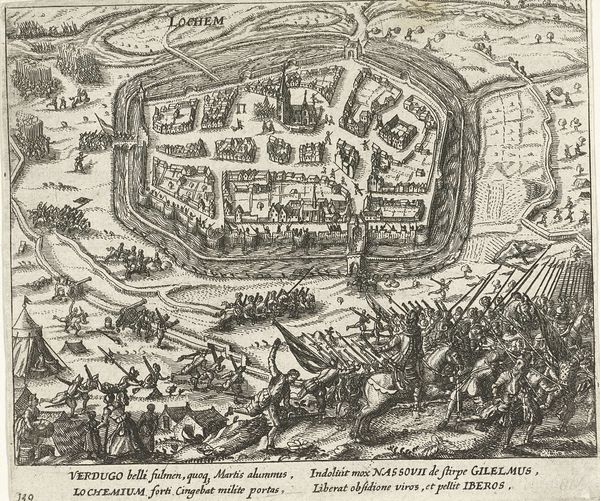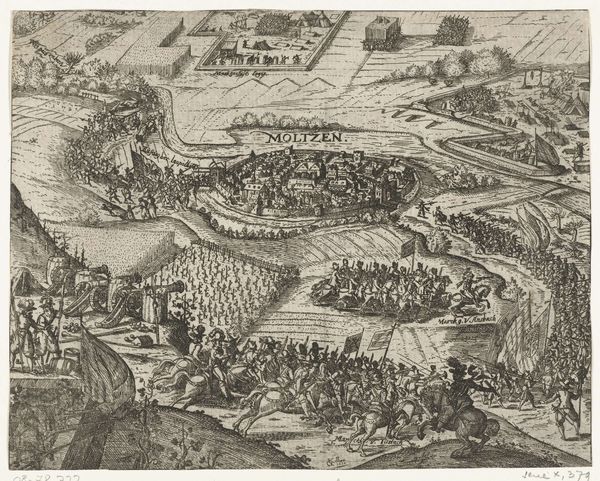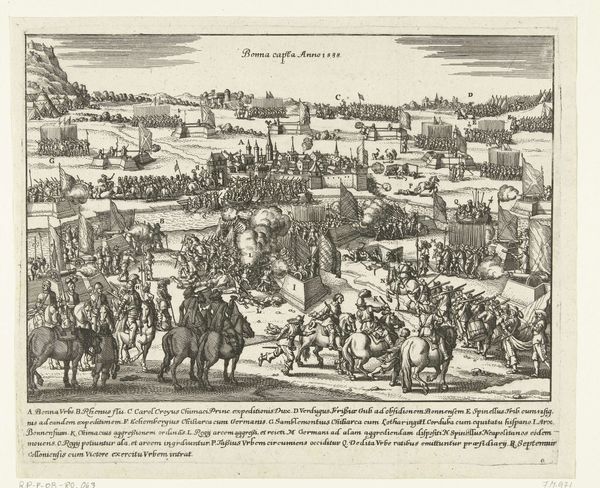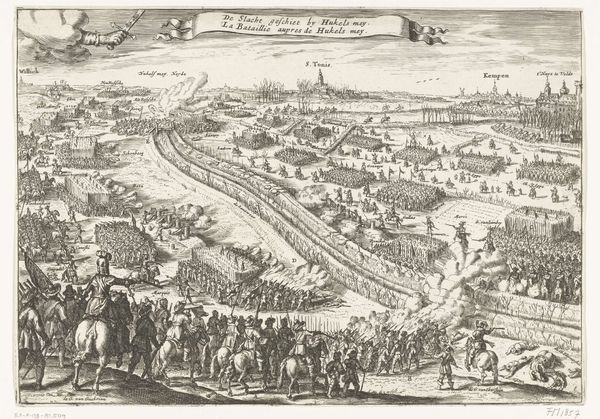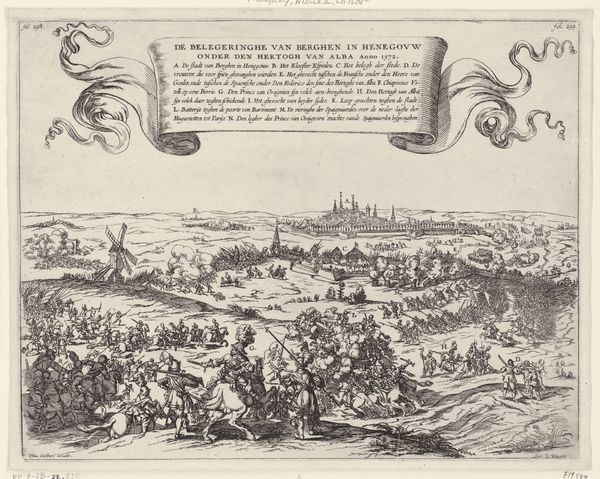
print, engraving
#
narrative-art
#
baroque
# print
#
war
#
landscape
#
history-painting
#
engraving
Dimensions: height 221 mm, width 276 mm
Copyright: Rijks Museum: Open Domain
Curator: Today, we’re looking at "The Battle of Oosterweel, 1567," an engraving likely created between 1649 and 1651. It's attributed to an anonymous artist. Editor: My first thought? Chaotic. The composition leads your eye every which way, a flurry of bodies, explosions, and frantic action. The lack of a clear focal point adds to that sense of overwhelming disorder. Curator: Absolutely. Contextually, it represents the Battle of Oosterweel, a significant event in the early stages of the Eighty Years' War. It's a stark depiction of the clash between Spanish forces and Dutch rebels, known as the "Sea Beggars" or "Gueux" in this image's lower margin. The narrative presents us with the initial repressions by the Spanish. Editor: Look at the stark contrast created with such fine lines. The engraver used hatching and cross-hatching to build up shadows and create depth, really emphasizing the dynamism. And the bodies tumbling into the river, that starkly engraved torrent. There's a tension between the artistry and the brutality of what’s portrayed. Curator: It's an interesting artistic choice to render such violence with such meticulous detail. Each figure, though small, is distinct. We are getting the visuality of a history painting by what are ostensibly documentary means. Note that many such history images show battles in tidy formation rather than this kind of bloody chaos. It reflects an ideological stance from decades after the initial conflict. The landscape behind it provides not an order but indifference to the slaughter. Editor: And speaking of ideological stance, consider the visual composition itself. The figures are not romanticized. It makes it feel much more brutal, less like a grand narrative and more like a desperate struggle for survival against forces which seem more aligned with the terrain itself than with ideas of freedom. The city rises behind the scene in neat lines, another opposition of freedom versus authority. Curator: It does give pause, doesn't it? The very materiality of the print, so precise and controlled, belies the untamed energy of the depicted scene. Looking at it again now, it makes you wonder at our investment in this image which romanticizes conflict for the purposes of a grand story that we should probably consider in light of our times. Editor: I concur. It's a reminder of the layered nature of visual narratives, where formal qualities can amplify or even contradict the overt subject matter, providing ample critical readings through which we understand war.
Comments
No comments
Be the first to comment and join the conversation on the ultimate creative platform.
